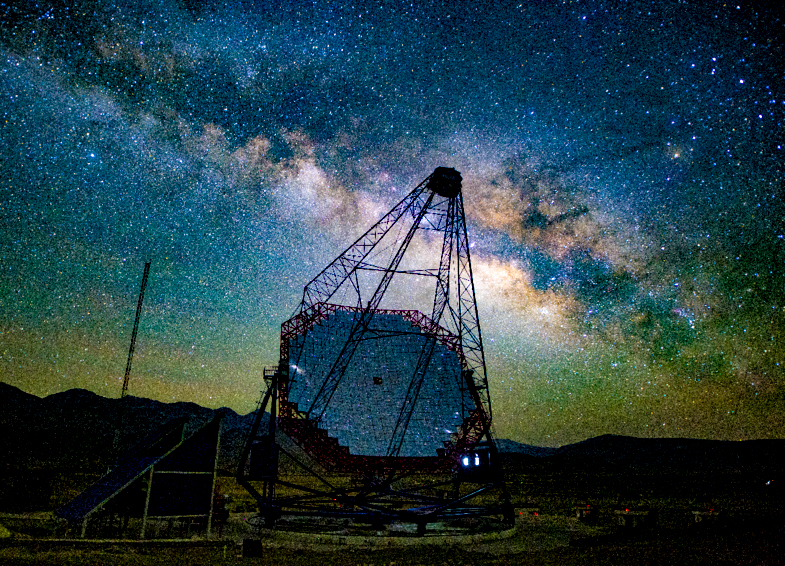India Inaugurates World’s Highest MACE Cherenkov Telescope, Boosting Science and Tourism in Ladakh’s Hanle
Hanle, Ladakh | October 28, 2024 — India has unveiled the Major Atmospheric Cherenkov Experiment (MACE), the world’s highest imaging Cherenkov telescope, at the Hanle Dark Sky Reserve (HDSR) in Ladakh. Situated at an altitude of over 4,300 meters, the new observatory not only advances India’s space research capabilities but also positions Hanle as an emerging hub for astro tourism.
Dual Impact: Science Meets Tourism
With MACE, India aims to explore cosmic phenomena like supernovae, gamma-ray bursts, and black holes, bringing global recognition to Indian astrophysics. Simultaneously, the facility enhances the tourism prospects of the Hanle region, nestled within the first Dark Sky Reserve in India. This designation ensures minimal light pollution, offering a pristine environment for stargazing and astrophotography, making it a prime destination for astronomy enthusiasts and tourists alike.
A Boon for Hanle’s Growing Astrotourism
The Hanle Dark Sky Reserve, already attracting sky-watchers from around the world, is expected to see a surge in tourism following the inauguration of the observatory. Visitors now have a unique opportunity to experience scientific infrastructure alongside stargazing activities.
- Night sky tours: Astrotourism operators can organize guided night-sky observation tours, giving tourists a chance to witness celestial phenomena through powerful telescopes.
- Collaborative outreach programs: The observatory plans to involve local schools and tourists in educational sessions, bridging science and tourism.
- Community-based tourism: The local population of Hanle is already engaged in homestays, providing visitors with an authentic cultural experience along with unparalleled access to clear night skies.
MACE Observatory’s Role in Promoting Sustainable Tourism
Speaking at the inauguration, Dr. Ajit Kumar Mohanty, Secretary of the Department of Atomic Energy (DAE), emphasized that the observatory will foster international scientific collaborations while promoting sustainable tourism in the region.
“Hanle’s pristine environment offers ideal conditions for both cutting-edge science and immersive tourism. This project symbolizes how science, community, and tourism can come together for mutual growth,” said Dr. Mohanty.
Community Involvement and Future Prospects
The inauguration celebrated the involvement of local students and leaders. Additional Secretary Ajay Ramesh Sule encouraged students from the region to pursue careers in science and astrophysics, recognizing the telescope’s potential to inspire future scientists. The event also highlighted the support from local leaders and residents, who play a key role in maintaining Hanle’s dark sky status.
International Appeal
As the highest imaging Cherenkov telescope in the world, MACE will attract scientists and tourists from around the globe. The observatory’s gamma-ray detection capabilities align with international efforts in multimessenger astronomy, positioning India as a key player in the global scientific community.
Tourism operators anticipate that Hanle’s scientific prestige will complement the scenic beauty and clear skies of the region, appealing to a wide range of visitors—from scientists and amateur astronomers to eco-tourists and backpackers.
With the inauguration of the MACE observatory, Hanle, Ladakh, is poised to become not just a center for cosmic research but also a leading destination for astro-tourism, drawing visitors with a unique blend of scientific wonder, natural beauty, and cultural experiences.

